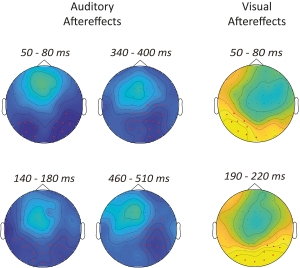UMRAM researchers have recently examined the effects of sub-second time interval adaptation on visual apparent motion. They found that both auditory and visual time interval adaptation can alter ERPs elicited by apparent motion. However, the after-effects by each modality were in the opposite direction and found as distinct changes in the spatiotemporal profile of the neural activity. Accordingly, these findings suggest that distributed sensory processes play an important role in sub-second time interval adaptation. Click here for further information and the journal article.
